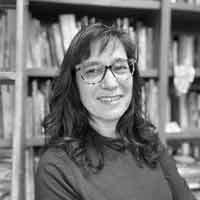Question
What is documentation in early childhood education?
Answer
Documentation is an interesting word because it's used in different ways. When some hear the word documentation, they might think, "Oh I know, it's panels, or it might just be taking notes on something, or it might mean doing an observation." Documentation sometimes has different connotations depending on your setting.
Take a moment and imagine a child sitting on a rug in the middle of a classroom. There are wood shelves with buckets of toys surrounding the small rug. You can hear other children playing, talking, and laughing. Think about what you saw in your mind. Did you notice little things about that child playing? Did you notice their facial expressions? Were they really serious and looking deeply at their toys, or were they tentative to join in with other children, maybe sitting off by themselves? Were they excited and leading the crowd and telling other children what to do? Were they using their right hand or their left hand to pick up the toys? Did you notice different types of toys and how the child interacted with them? Did you notice or hear any conversations about their play? Did you see how the classroom supports various areas of development and curriculum? Did the classroom inspire creativity and inquiry for this particular child? Do you think they could be successful?
When you do this type of deep thinking about an individual child and then think about the classroom, the environment, and the other children, how could you document those things to tell that story? Learning to see, to observe, to expect, and to know all the different things going on and document this learning is what documentation is. It takes practice to really see what you're doing. It's the small details that help you be a good documenter and assess children's learning to make it visible.
Documentation is a way to share and communicate a story. It might be a visual story, an auditory story, or an electronic story, but it's a way to communicate that story. It's a way to learn and to communicate information about a particular child. You're going to learn about how your curriculum is happening in your classroom. It also gives you feedback as a teacher and makes you be very intentional. Documentation is learning how to see. Good documentation will help you see things, but it also helps others see them too. The photo in figure 1 can be used to tell several stories if you look carefully.

Figure 1. Girl using a rolling pin.
A photo might tell the story of development. When I look at figure 1, it looks like she is right-hand dominant. When she begins to write, she's going to be writing with her right hand. I can see that because I can see the palm of her hand pressing deeper on the right side and it's shaped differently. That is a very minor detail if we look at just both of those things, but it is important information that will help us when we think about writing. I'm only showing her hands here, but if we had a video, series of photographs, or a series of notes taken about this, we might know other children are in the area. Maybe she's not looking down at what she's doing at all, maybe she's looking at another child and talking, or maybe she is really serious and trying really hard to make it flat. Maybe she is making dinner and she's making the pancakes right now. We don't know, but we're seeing little tidbits of the story. Just one photograph can tell us a lot of information.
This Ask the Expert is an edited excerpt from the course, Documentation: Making Children's Learning Visible, presented by Hilary Seitz, PhD.
